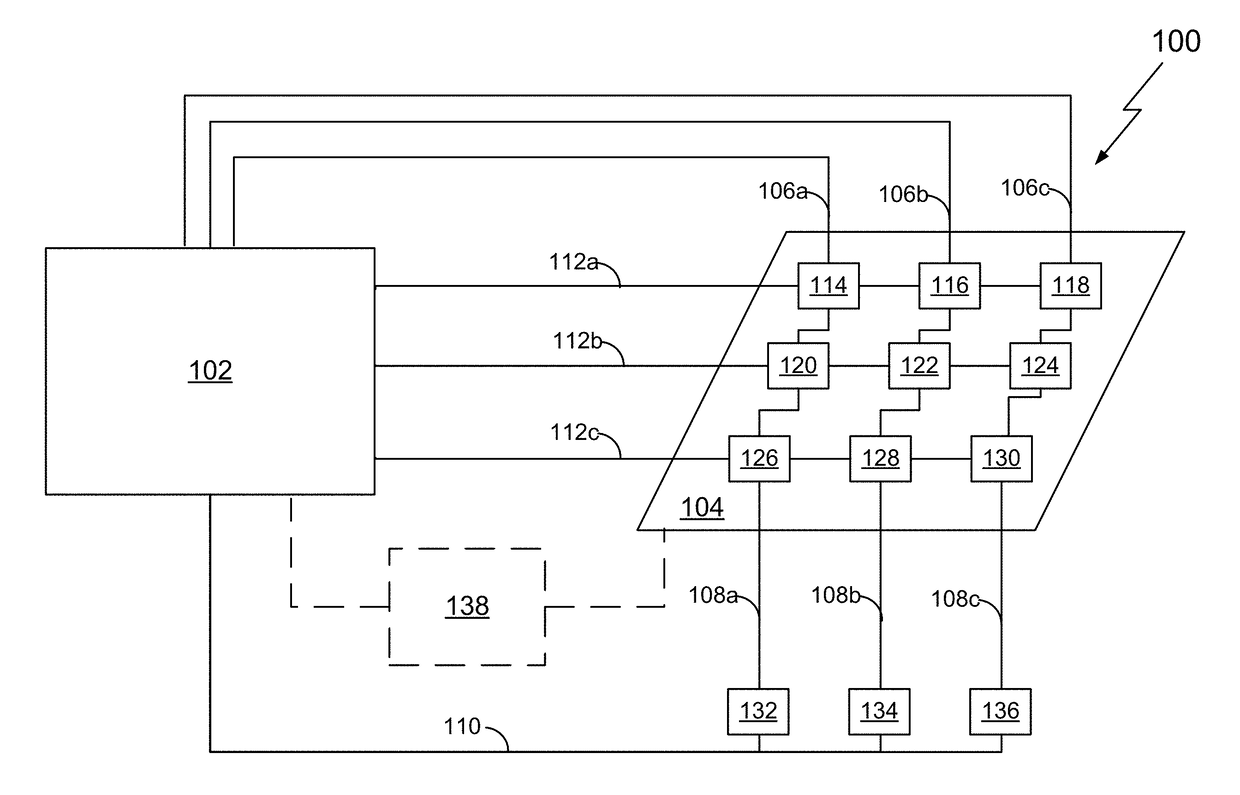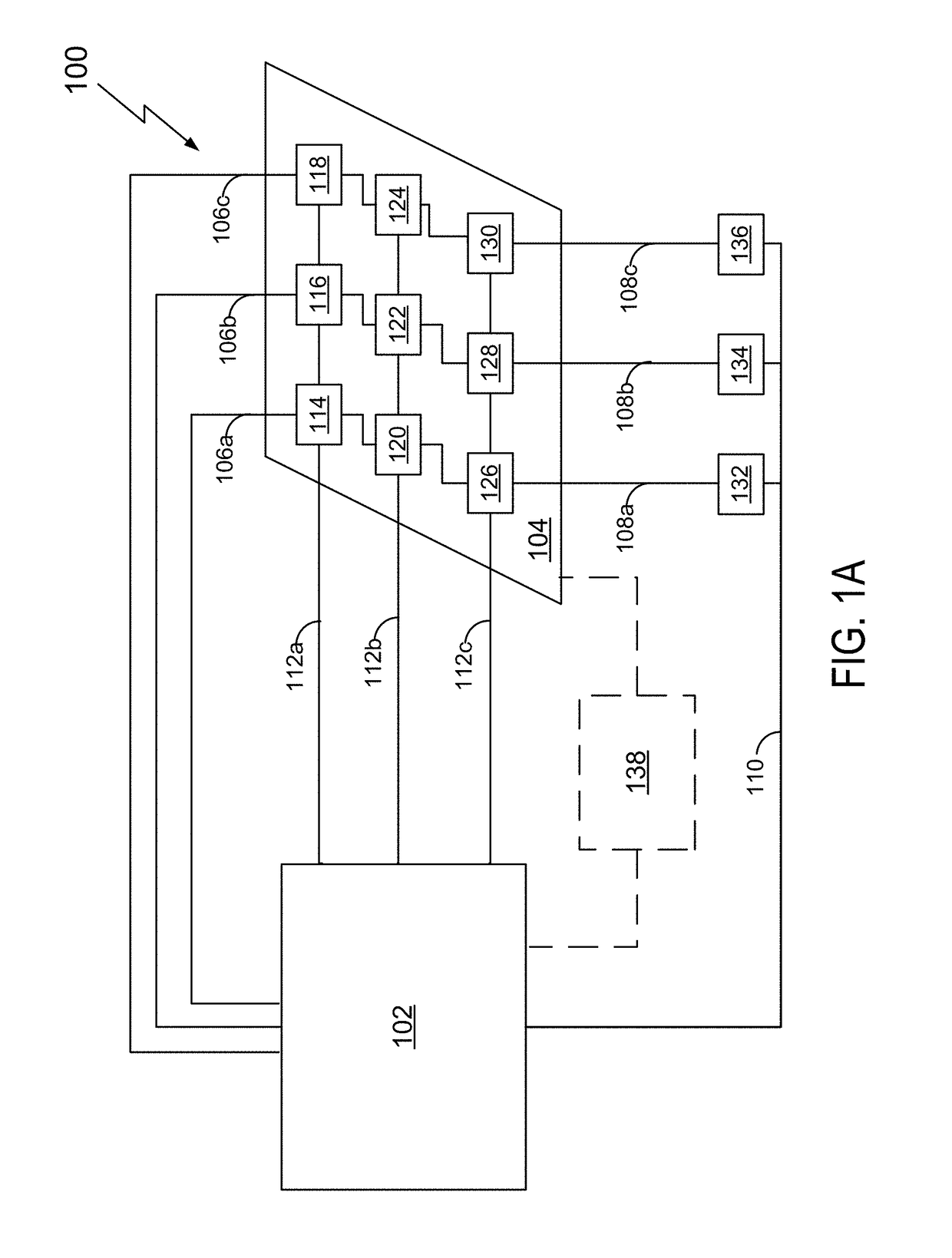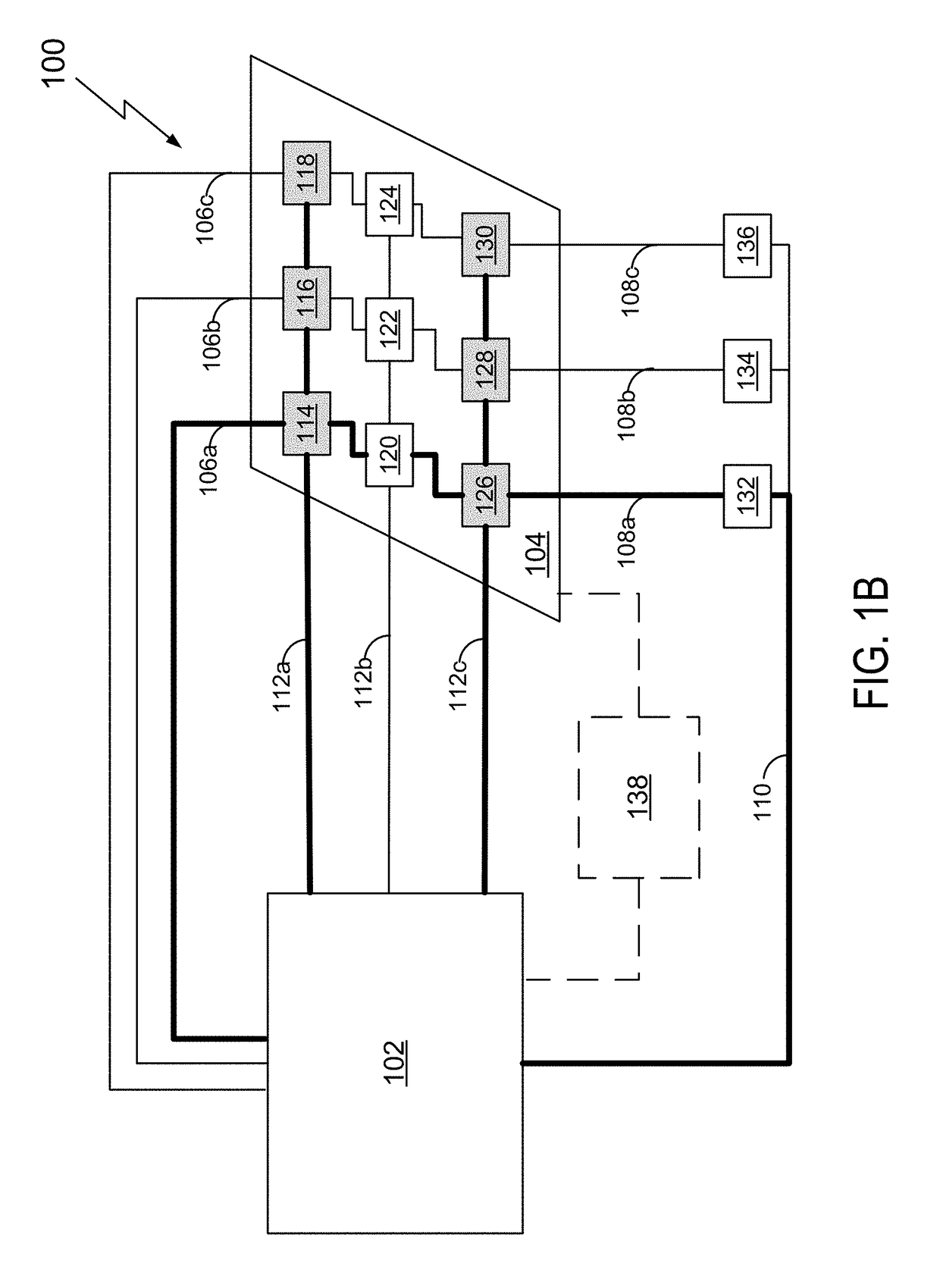Techniques for dynamically determining performance of read reclaim operations
a technology of read reclaim and performance, applied in the direction of memory architecture accessing/allocation, instruments, computing, etc., can solve the problems of exasperated degradation of memory cells due to read or write operations, data stored within memory cells can degrade over time, and data stored therein can become corrupted, so as to achieve the effect of reducing memory degradation
- Summary
- Abstract
- Description
- Claims
- Application Information
AI Technical Summary
Benefits of technology
Problems solved by technology
Method used
Image
Examples
Embodiment Construction
[0020]FIG. 1A illustrates a system 100 including a planar memory cells 104. Planar memory cells 104 can be a two-dimensional memory construct that may be manufactured using deposition techniques. As illustrated, controller 102, can interface with planar memory cells 104. Controller 102 can be configured to determine (i.e., read) state(s) of one or more memory cells 114-130 of planar memory cells 104. Controller 102 can be configured to write to one or more of memory cells 114-130. The read and write operations can be performed in parallel and in any combination. Although not illustrated, controller 102 can interface with a central processing unit (CPU) via a bus (e.g., a peripheral component interface(PCI)). Controller 102 can include processor(s) (x86, ARM, etc.), buffer(s), driver(s), programmable logic device(s), an application specific integrated circuit (ASIC), etc. Controller 102 can interface with memory (not shown) to load and / or implement firmware or other instructions that...
PUM
 Login to View More
Login to View More Abstract
Description
Claims
Application Information
 Login to View More
Login to View More - R&D
- Intellectual Property
- Life Sciences
- Materials
- Tech Scout
- Unparalleled Data Quality
- Higher Quality Content
- 60% Fewer Hallucinations
Browse by: Latest US Patents, China's latest patents, Technical Efficacy Thesaurus, Application Domain, Technology Topic, Popular Technical Reports.
© 2025 PatSnap. All rights reserved.Legal|Privacy policy|Modern Slavery Act Transparency Statement|Sitemap|About US| Contact US: help@patsnap.com



